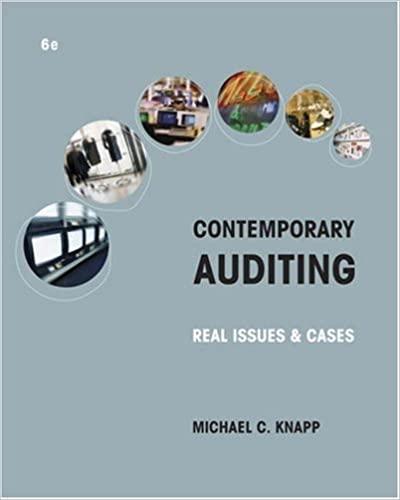Question
QUESTION 4 KAM Ltd (KAM) is a private company in the electronics industry. The company has grown steadily since its incorporation in 1997 and is
QUESTION 4
KAM Ltd (KAM) is a private company in the electronics industry. The company has grown steadily since its incorporation in 1997 and is seeking public listing in the next financial year.
KAM prepared its financial statements under International Financial Reporting Standards (IFRS).
You work in the finance department of KAM and are currently working on the financial statements for the year ended 30 April 2020.
In order to gain maximum interest from the market when shares are offered for public trading, the Directors of KAM are keen to present financial statements showing high profitability.
They are aware that market analysts will look favourably on a higher than average return on capital employed (ROCE) for the electronics industry.
The standard formula to calculate gearing by analysis is:
Profit before interest and tax Equity + Long term liabilities
When reviewing the financial statement the following matters come to light: Part (a)
On 1 May 2019, KAM issued redeemable preference shares for 10 million. The preference shares carry a fixed dividend of 5%.
The dividend of 500,000 has been paid on 30 April 2020 and this amount has been deducted from reserves.
The directors are pleased as the amount paid has not affected the profit for the year.
QUESTION 4 CONTINUES ON THE NEXT PAGE:-
REQUIRED:
- Explain the correct treatment of the bond under IFRS, identifying any necessary adjustments to the profit for the year ending 30 April 2020.
(5 marks)
Maximum word count 200
- Explain whether the return on capital employed for KAM will change as a result of the adjustments calculated in (a) (i).
(4 marks) Maximum word count: 100
Part (b)
On 1 May 2019, KAM granted 100 share options to all of its employees within its development team on the condition that they remain in its employment for the next four years.
At the grant date, there were 150 employees in the development team and the fair value of each option on the grant date was 52.
During the year ended 30 April 2019, the estimate of the total employee departure was assessed as 10% of the original 150 employees.
During the year ended 30 April 2020, the estimate of total employee departures was reassessed to 8% of the original 150 employees.
The share based payment was correctly accounted in the financial statements for the year ended 30 April 2019. The directors of KAM have stated that they do not wish to make any adjustment for the year ended 30 April 2020, as the impact of the options wont be felt for another 2 years.
QUESTION 4 CONTINUES ON THE NEXT PAGE:-
REQUIRED:
- Compute any necessary adjustments to profit before interest and tax for the year ended 30 April 2020 as well as the balance within equity on that date.
(5 marks)
- Provide a brief explanation for the treatment of this type of share based payment in accordance with IFRS 2: Share based payment.
(4 marks)
Word count: 200
- Explain whether the return on capital employed for KAM Plc. will increase or decrease as a result of adjustments calculated in (a) (i).
Word count 100
Having made the adjustments as well as providing explanations for these amendments for the share-based payments, you receive an email from the Managing Director asking:
Can the estimates for total expected departures be increased, so lessening the impact of profit?
REQUIRED:
Construct a brief reply to the Managing Directors email discussing whether this would be permitted under IFRS.
Step by Step Solution
There are 3 Steps involved in it
Step: 1

Get Instant Access to Expert-Tailored Solutions
See step-by-step solutions with expert insights and AI powered tools for academic success
Step: 2

Step: 3

Ace Your Homework with AI
Get the answers you need in no time with our AI-driven, step-by-step assistance
Get Started


